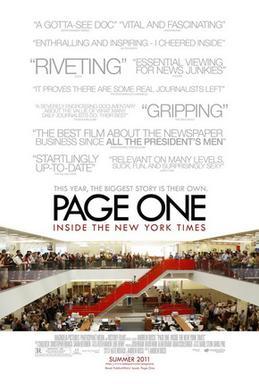The film answers these questions, poignantly, in just two words: David Carr.
Carr is a New York Times reporter and columnist whose personal story of emergence from a life ravaged by years of drug and alcohol abuse to become among the premier journalists of our day is well known. Page One uses Carr as a thread to weave together the disparate - and remarkable personalities - who labor day in and day out at the "Gray Lady" to make the Times the newspaper of record not only for our country, but for the world.
 |
| A less wizened David Carr, from his bio page at the New York Times |
Yet Page One presents us with more than a picture of Carr the man, but also of Carr the reporter, restlessly dogging a story, piecing together scraps of information, on the telephone, speaking with often reluctant sources, but always endeavoring to be scrupulously fair. In this regard he and his colleagues at the Times distinguish themselves not only by the stories they produce, but also by the process that they engage in. In a media cultural of ever-breaking news, it's heartening to realize that some news "outlets" pause to reflect on what they are about to report, wrestling with professional and ethical concerns which might result in a promising and crowd pleasing story being moved off of the much sought-after "page one" and even abandoned entirely.
So the question of old- versus new-media comes down to that age-old one, often cast in terms of out-of-touch elitism versus rampant egalitarianism. The new media advocates are given their due in Page One - in particular with the blogosphere phenom turned New York Times reporter, Brian Stelter - but at the end of the day we are asked to choose: Do we want to rely on people just like us to do this important job. Is the Joe the Plumber mentality that led to the election of everyman George W. Bush in 2000 and may very well place the reins of the most powerful office in the world in the hands of the likes of Sarah Palin in 2012 a good model for the future of journalism?
By my lights, it is not. I don't want to be getting my news from otherwise preoccupied, unseasoned people like me, running around with high-definition video cameras and tablet computers. I want to be getting my news from David Carr and people like him, people who see their work not only as a craft refined through years of diligent effort but also as a grave responsibility and a dignified form of public service.

"Page One" - Profits and Prophets and the Survival of the New York Times by Marc Merlin is licensed under a Creative Commons Attribution-NonCommercial-NoDerivs 3.0 Unported License.
Based on a work at thoughtsarise.blogspot.com.
